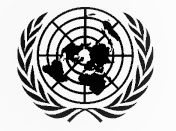How do our ideas about gender shape the impact of weapons, both in our communities and on each of us as individuals?
This question was recently put to university students in India by representatives of the United Nations Regional Centre for Peace and Disarmament in Asia and the Pacific (UNRCPD). They were participating in a webinar on “gender and peace”, the fourth lecture in a series organized by the Prajnya Trust and Sansristi, two India-based civil society organizations.

Analysing how disarmament, non-proliferation and arms control processes intersect with areas like gender can inform the development of more effective policies, programmes and projects, UNRCPD staff told the students. When the Security Council adopted resolution 1325 (2000) about two decades ago, it kicked off a series of policies and initiatives that have drawn more attention to the connection between gender dynamics and armed violence.
Gender norms—internalized ideas about how men and women should act—can affect both the likelihood of becoming a target of armed violence and the lasting social, economic, and physical impacts faced by survivors, said Ms. Ida Scarpino, UNRCPD’s Gender and Small Arms and Light Weapons (SALW) project coordinator. She singled out small arms and light weapons for inflicting distinct harms on women, girls, men and boys, as reflected in several related multilateral instruments.

Although nuclear arms and other weapons of mass destruction are inherently indiscriminate, ionizing radiation has been proven to have unique adverse effects on women, said Mr. Steven Humphries, UNRCPD’s project coordinator for UN Security Council resolution 1540 (2004). To pursue progress on nuclear disarmament and non-proliferation, advocates must apply a so-called “gender lens”, ensure that diverse voices are heard and challenge gendered patterns of power relations, he concluded.
Mr. Humphries’s remarks gave way to an insightful discussion with the students on the implications and implementation of the Treaty on the Prohibition of Nuclear Weapons, which entered into force in January 2021 and represents the first multilateral nuclear disarmament treaty in more than two decades.

Looking to the future, three United Nations Youth Champions for Disarmament introduced the audience to the #Youth4Disarmament initiative, which seeks to connect geographically diverse young people with experts to learn about current international security challenges, the work of the United Nations and how to actively participate. As members of a unique #Youth4Disarmament training programme, Ms. Palesa Mogorosi, Ms. Christelle Barakat and Ms. Linh Trang enriched the discussion with their views about the critical role of young people in raising awareness and developing new approaches with regard to disarmament, non-proliferation and arms control efforts. They encouraged their peers to get involved and make their voice heard.


